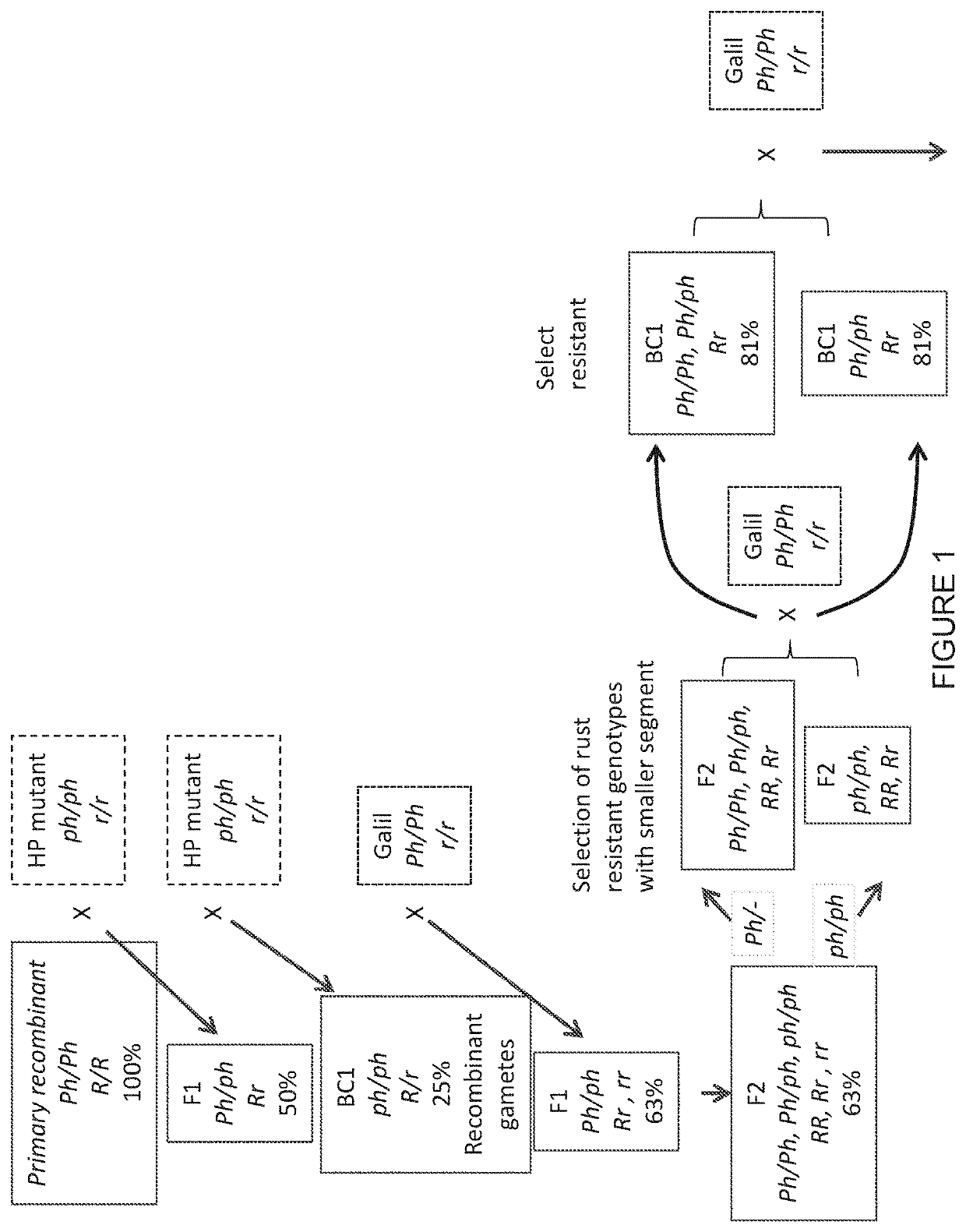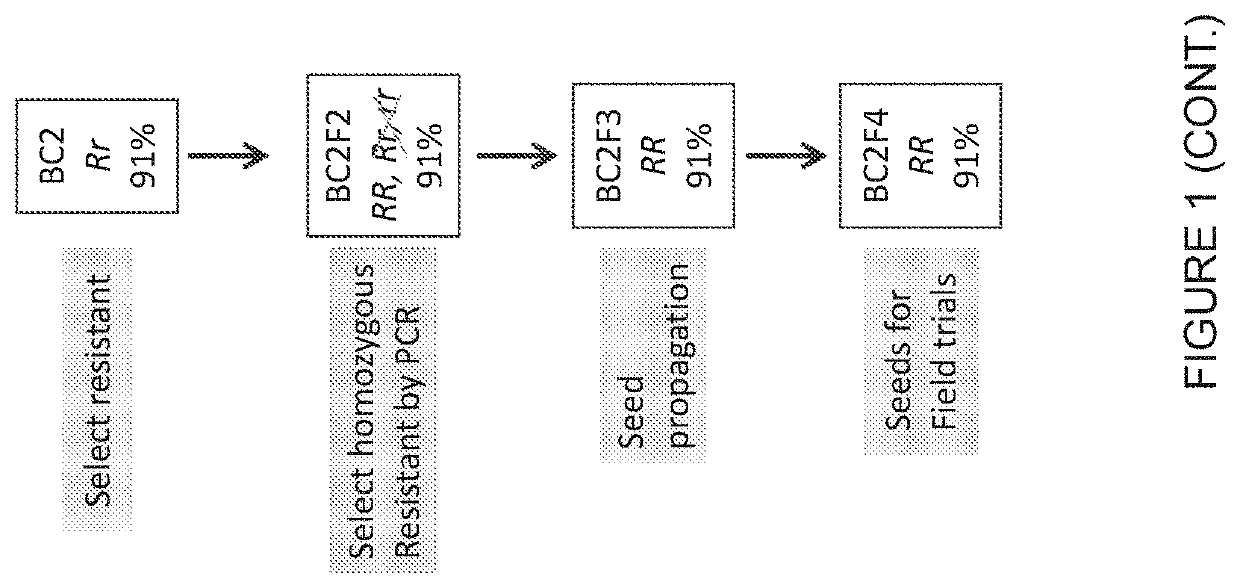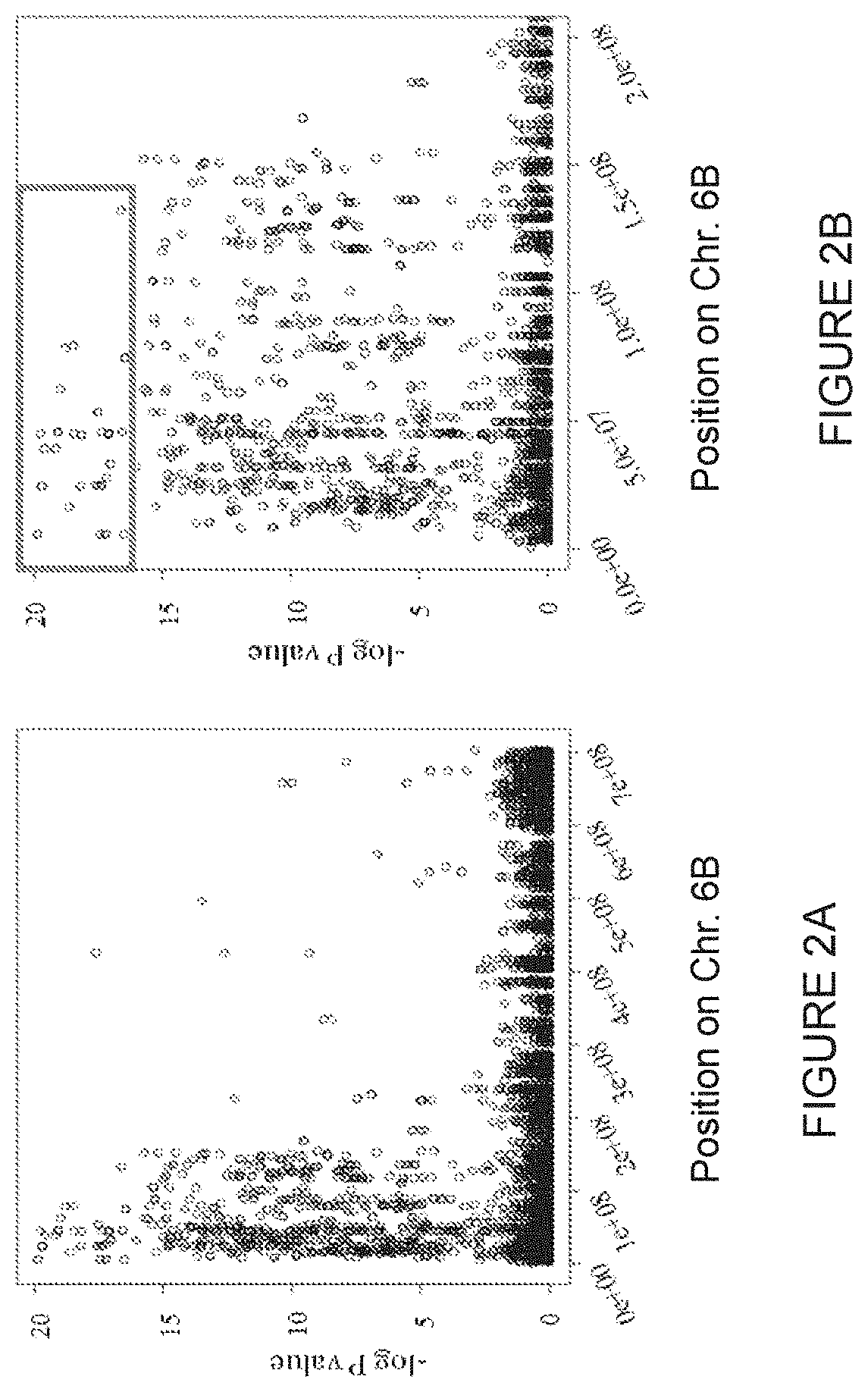Compositions and methods conferring resistance to rust diseases
- Summary
- Abstract
- Description
- Claims
- Application Information
AI Technical Summary
Benefits of technology
Problems solved by technology
Method used
Image
Examples
example 1
n of the Secondary Recombinants with a Shorter Alien Segment
[0230]Primary recombinant lines were hybridized and backcrossed with Sears' high pairing mutant (ph / b, HP mutant). Homozygous ph1b progenies that were heterozygous for the wheat and its homoeologous alien segments were selected and crossed with the elite spring wheat cv. Galil. A population of 1240 plants of this progeny was inoculated with the leaf rust and stripe rust isolates described hereinabove. A total of 594 plants were found resistant to both isolates, 45 were found resistant to one of the isolates (28 to leaf rust and 17 to stripe rust), and the other 601 plants were susceptible to both isolates.
[0231]DNA from 100 resistant and susceptible progenies (including cv. Galil, the HP mutant, and 74 resistant and 24 susceptible secondary recombinant F1 plants) was sequenced and analyzed as described hereinabove. A genetic map of chromosome 6B was generated based on frequency of recombination events and using the genome s...
example 2
ng Shorter Resistance-Conferring Segment
[0235]To further reduce the size of the alien segment, a cross between two SR BC2 plants was performed, one with a right arm tail and one with a left arm tail (FIG. 7). The progeny of this cross was analyzed by PCR using the diagnostic primers (Table 2) and two hybrids were selected. One hybrid (R-1018) contained an alien segment that was derived from chromosome 6B in SR lines R-18 and R-10 and contained the 2-3HS2 and 2-3HS3 markers (FIG. 4). The alien segment in this line was limited by markers 2-3HS2 and 3S4, indicating even a shorter segment than in the TR line P-37 (FIG. 4). The other hybrid (R-1610) contained an alien segment that was derived from chromosome 6B in SR lines R-16 and R-10 and contained the 2-3HS2 and 2-3HS3 markers but also was limited by these markers. This hybrid possessed the shortest segment of all the introgression lines. Unexpectedly, self-pollination of the heterozygous hybrid (comprising one recombinant and one naï...
example 3
of Homozygous Plants
[0236]Homozygous resistant plants were selected from self-pollinated SR BC2 progeny by their alien segment status as follows: At least 100 BC2F2 plants from each SR line were screened with the PCR markers Zyg_1_Sh_1 and Zyg_2 G_2 (Table 2). The marker Zyg_1Sh_1 (1Sh_1) detects SNP of Ae. sharonensis. This marker amplifies the same sequence as 2-3HS2 from the same middle region; however, 1Sh_1 is always used in pair with Zyg_2 G_2 (2G_2), which detects the SNP of Galil, such that in homozygous plant for Ae. sharonensis using 1Sh 1 will result in an amplified band, and using 2G_2 will not. In heterozygous plant, both primers will give a band. Self-fertile lines with cv. Galil morphology, that had the desired alien chromatin and lacked the cv. Galil PCR marker were selected. BC2F3 seeds of the selected homozygotes of each SR line were pooled and used to produce BC2F4 seeds for further experiments including resistance to stripe rust in the field.
PUM
 Login to View More
Login to View More Abstract
Description
Claims
Application Information
 Login to View More
Login to View More - R&D
- Intellectual Property
- Life Sciences
- Materials
- Tech Scout
- Unparalleled Data Quality
- Higher Quality Content
- 60% Fewer Hallucinations
Browse by: Latest US Patents, China's latest patents, Technical Efficacy Thesaurus, Application Domain, Technology Topic, Popular Technical Reports.
© 2025 PatSnap. All rights reserved.Legal|Privacy policy|Modern Slavery Act Transparency Statement|Sitemap|About US| Contact US: help@patsnap.com



